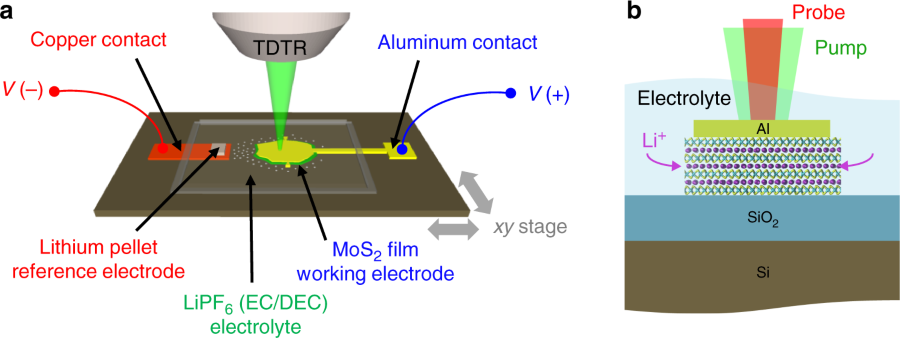Nanowerk November 14, 2018
An international team of researchers (USA – Stanford University, Rice University, UC Davis, SLAC National Accelerator Laboratory, Germany) bathed a thin layer of molybdenum disulfide that is made up of layered sheets of atoms in a liquid with lots of lithium ions to make it into a transistor-like switch. When a small electrical current is applied to the system, the lithium atoms begin to infuse into the layers of the crystal, changing its heat-conducting characteristics. As the lithium concentration increases, the thermal transistor switches off. Besides enabling dynamic heat control, the team’s results provide new insights into what causes lithium ion batteries to fail. As the porous materials in a battery are infused with lithium, they impede the flow of heat and can cause temperatures to shoot up…read more. Open Access TECHNICAL ARTICLE

Schematic of the electrochemical cell used for operando TDTR experiments. Credit: Nature Communications volume 9, Article number: 4510 (2018)